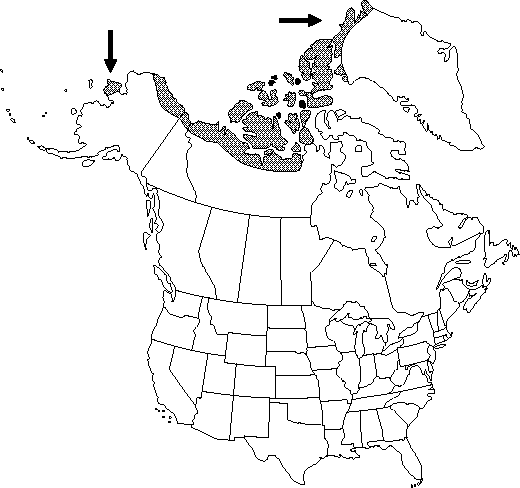FNA>Volume Importer |
FNA>Volume Importer |
| Line 23: |
Line 23: |
| | }}<!-- | | }}<!-- |
| | | | |
| − | --><span class="statement" id="st-d0_s0" data-properties="stem orientation;stem orientation;stem some measurement;stem pubescence;flower quantity"><b>Stems </b>erect or decumbent, 1-12 cm, sparsely pilose, each with 1-3 flowers.</span> <span class="statement" id="st-d0_s1" data-properties="root size;root thickness"><b>Roots </b>slender, 0.3-0.8 mm thick.</span> <span class="statement" id="st-d0_s2" data-properties="basal leaf duration;blade shape;blade shape;blade shape;blade shape;blade shape;blade shape;blade shape;blade shape;blade shape;blade shape;blade length;blade width;segment architecture or shape;segment shape;base shape;margin architecture or shape;apex shape;apex shape;apex shape"><b>Basal </b>leaves persistent, blades broadly obovate to transversely elliptic, 3-lobed or parted, 0.9-3 × 0.8-3.4 cm, segments undivided or again lobed, base obtuse, margins entire, apices of segments rounded to rounded-obtuse.</span> <span class="statement" id="st-d0_s3" data-properties="pedicel pubescence"><b>Flowers:</b> pedicels pilose;</span> <span class="statement" id="st-d0_s4" data-properties="receptacle pubescence">receptacle pilose;</span> <span class="statement" id="st-d0_s5" data-properties="sepal length;sepal width;sepal pubescence;hair coloration">sepals 4-7 × 2-3 mm, abaxially pilose, hairs colorless;</span> <span class="statement" id="st-d0_s6" data-properties="petal quantity;petal length;petal width">petals 5, 5-8 × 3-4 mm;</span> <span class="statement" id="st-d0_s7" data-properties="nectary scale pubescence">nectary scale glabrous.</span> <span class="statement" id="st-d0_s8" data-properties="head shape;head length;head width"><b>Heads </b>of achenes cylindric, 6-9 × 4 mm;</span> <span class="statement" id="st-d0_s9" data-properties="achene length;achene width;achene pubescence">achenes 1.2-1.4 × 0.8-1 mm, glabrous;</span> <span class="statement" id="st-d0_s10" data-properties="beak shape;beak course;beak course;beak some measurement;2n chromosome quantity">beak lance-subulate, straight or curved, 0.4-0.6 mm. <b>2n</b> = 64.</span><!-- | + | --><span class="statement" id="st-undefined" data-properties=""><b>Stems </b>erect or decumbent, 1-12 cm, sparsely pilose, each with 1-3 flowers. <b>Roots</b> slender, 0.3-0.8 mm thick. <b>Basal</b> leaves persistent, blades broadly obovate to transversely elliptic, 3-lobed or -parted, 0.9-3 × 0.8-3.4 cm, segments undivided or again lobed, base obtuse, margins entire, apices of segments rounded to rounded-obtuse. <b>Flowers</b>: pedicels pilose; receptacle pilose; sepals 4-7 × 2-3 mm, abaxially pilose, hairs colorless; petals 5, 5-8 × 3-4 mm; nectary scale glabrous. <b>Heads</b> of achenes cylindric, 6-9 × 4 mm; achenes 1.2-1.4 × 0.8-1 mm, glabrous; beak lance-subulate, straight or curved, 0.4-0.6 mm. <b>2n</b> = 64.</span><!-- |
| | | | |
| | -->{{Treatment/Body | | -->{{Treatment/Body |
| Line 54: |
Line 54: |
| | |publication year=1824 | | |publication year=1824 |
| | |special status=Endemic | | |special status=Endemic |
| − | |source xml=https://jpend@bitbucket.org/aafc-mbb/fna-fine-grained-xml.git/src/287ef3db526bd807d435a3c7423ef2df1e951227/V3/V3_649.xml | + | |source xml=https://jpend@bitbucket.org/aafc-mbb/fna-data-curation.git/src/9216fc802291cd3df363fd52122300479582ede7/coarse_grained_fna_xml/V3/V3_649.xml |
| | |genus=Ranunculus | | |genus=Ranunculus |
| | |subgenus=Ranunculus subg. Ranunculus | | |subgenus=Ranunculus subg. Ranunculus |
| | |section=Ranunculus sect. Epirotes | | |section=Ranunculus sect. Epirotes |
| | |species=Ranunculus sabinei | | |species=Ranunculus sabinei |
| − | |2n chromosome quantity=64
| |
| − | |achene length=1.2mm;1.4mm
| |
| − | |achene pubescence=glabrous
| |
| − | |achene width=0.8mm;1mm
| |
| − | |apex shape=rounded;rounded-obtuse
| |
| − | |basal leaf duration=persistent
| |
| − | |base shape=obtuse
| |
| − | |beak course=curved;straight
| |
| − | |beak shape=lance-subulate
| |
| − | |beak some measurement=0.4mm;0.6mm
| |
| − | |blade length=0.9cm;3cm
| |
| − | |blade shape=broadly obovate;transversely elliptic 3-lobed or parted
| |
| − | |blade width=0.8cm;3.4cm
| |
| − | |flower quantity=1;3
| |
| − | |hair coloration=colorless
| |
| − | |head length=6mm;9mm
| |
| − | |head shape=cylindric
| |
| − | |head width=4
| |
| − | |margin architecture or shape=entire
| |
| − | |nectary scale pubescence=glabrous
| |
| − | |pedicel pubescence=pilose
| |
| − | |petal length=5mm;8mm
| |
| − | |petal quantity=5
| |
| − | |petal width=3mm;4mm
| |
| − | |receptacle pubescence=pilose
| |
| − | |root size=slender
| |
| − | |root thickness=0.3mm;0.8mm
| |
| − | |segment architecture or shape=undivided
| |
| − | |segment shape=lobed
| |
| − | |sepal length=4mm;7mm
| |
| − | |sepal pubescence=pilose
| |
| − | |sepal width=2mm;3mm
| |
| − | |stem orientation=decumbent;erect
| |
| − | |stem pubescence=pilose
| |
| − | |stem some measurement=1cm;12cm
| |
| | }}<!-- | | }}<!-- |
| | | | |
| | -->[[Category:Treatment]][[Category:Ranunculus sect. Epirotes]] | | -->[[Category:Treatment]][[Category:Ranunculus sect. Epirotes]] |
Stems erect or decumbent, 1-12 cm, sparsely pilose, each with 1-3 flowers. Roots slender, 0.3-0.8 mm thick. Basal leaves persistent, blades broadly obovate to transversely elliptic, 3-lobed or -parted, 0.9-3 × 0.8-3.4 cm, segments undivided or again lobed, base obtuse, margins entire, apices of segments rounded to rounded-obtuse. Flowers: pedicels pilose; receptacle pilose; sepals 4-7 × 2-3 mm, abaxially pilose, hairs colorless; petals 5, 5-8 × 3-4 mm; nectary scale glabrous. Heads of achenes cylindric, 6-9 × 4 mm; achenes 1.2-1.4 × 0.8-1 mm, glabrous; beak lance-subulate, straight or curved, 0.4-0.6 mm. 2n = 64.
Phenology: Flowering summer (Jul–Aug).
Habitat: Slopes and hummocks in tundra, in sandy or gravelly soil
Elevation: 0 m
Distribution
Greenland, N.W.T., Yukon, Alaska.
Discussion
An alternative interpretation of this taxon is given by E. Hultén (1971) who considered it to be the hybrid Ranunculus nivalis × R. pygmaeus, and considered all specimens referable here to be hybrids or members of stabilized populations of hybrid origin.
Selected References
None.
